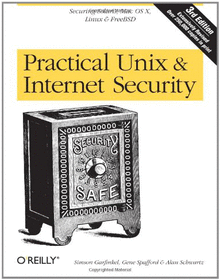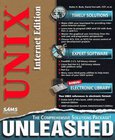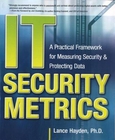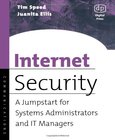Practical Unix & Internet Security
3rd Edition

Book Details:
| Publisher: | O'Reilly Media |
| Series: | OReilly , Practical |
| Author: | Simson L. Garfinkel |
| Edition: | 3 |
| ISBN-10: | 0596003234 |
| ISBN-13: | 9780596003234 |
| Pages: | 988 |
| Published: | Feb 28 2003 |
| Posted: | Nov 19 2014 |
| Language: | English |
| Book format: | CHM |
| Book size: | 2.39 MB |
Book Description:
When Practical Unix Security was first published more than a decade ago, it became an instant classic. Crammed with information about host security, it saved many a Unix system administrator from disaster. The second edition added much-needed Internet security coverage and doubled the size of the original volume. The third edition is a comprehensive update of this very popular book - a companion for the Unix/Linux system administrator who needs to secure his or her organization's system, networks, and web presence in an increasingly hostile world.Focusing on the four most popular Unix variants today--Solaris, Mac OS X, Linux, and FreeBSD--this book contains new information on PAM (Pluggable Authentication Modules), LDAP, SMB/Samba, anti-theft technologies, embedded systems, wireless and laptop issues, forensics, intrusion detection, chroot jails, telephone scanners and firewalls, virtual and cryptographic filesystems, WebNFS, kernel security levels, outsourcing, legal issues, new Internet protocols and cryptographic algorithms, and much more.Practical Unix Internet Security consists of six parts:Computer security basics: introduction to security problems and solutions, Unix history and lineage, and the importance of security policies as a basic element of system security. Security building blocks: fundamentals of Unix passwords, users, groups, the Unix filesystem, cryptography, physical security, and personnel security. Network security: a detailed look at modem and dialup security, TCP/IP, securing individual network services, Sun's RPC, various host and network authentication systems (e.g., NIS, NIS+, and Kerberos), NFS and other filesystems, and the importance of secure programming. Secure operations: keeping up to date in today's changing security world, backups, defending against attacks, performing integrity management, and auditing. Handling security incidents: discovering a break-in, dealing with programmed threats and denial of service attacks, and legal aspects of computer security. Appendixes: a comprehensive security checklist and a detailed bibliography of paper and electronic references for further reading and research. Packed with 1000 pages of helpful text, scripts, checklists, tips, and warnings, this third edition remains the definitive reference for Unix administrators and anyone who cares about protecting their systems and data from today's threats.
Download Link:
Related Books:
Unix Unleashed
Internet Edition
Coverage includes the following: Graphical user interfaces for end-user and programmer - Text editing with vi and emacs - Program in awk, Perl, C, C++ - Text formatting with troff/nroff using macro packages - Writing your own macros, additional tools for writers - Jump-start on security: risks, technologies and organizations - Internet refresher course: HTML, MIME formats, HTTP - Interactive web sites with CGI using Shell, Perl, C or C++. - Monitor & optimize web server Source control using RCS, CVS and SCCS - Frequently Asked Questions: SVR4, HP-UX, AIX, Solaris, IRIX, BSD, SunOS, Linux - Glossary of technical terms Disk Content Summary...
IT Security Metrics
A Practical Framework for Measuring Security & Protecting Data
Implement an Effective Security Metrics Project or Program IT Security Metrics provides a comprehensive approach to measuring risks, threats, operational activities, and the effectiveness of data protection in your organization. The book explains how to choose and design effective measurement strategies and addresses the data requirements of those strategies. The Security Process Management Framework is introduced and analytical strategies for security metrics data are discussed. You'll learn how to take a security metrics program and adapt it to a variety of organizational contexts to achieve continuous security improvement over time. Real-world examples of security measurement projects are included in this definitive guide. Define security metrics ...
Internet Security
A Jumpstart for Systems Administrators and IT Managers
Internet Security incorporates not only the technology needed to support a solid security strategy but also those policies and processes that must be incorporated in order for that strategy to work.
New methods of breaking into corporate networks are resulting in major losses. This book provides the latest information on how to guard against attacks and informs the IT manager of the products that can detect and prevent break-ins. Crucial concepts such as authentication and encryption are explained, enabling the reader to understand when and where these technologies will be useful. Due to the authors' experiences in helping corporations develop secure networks, they are able to include the newest methods for protecting corporate data.
Shield data f...
2007 - 2021 © eBooks-IT.org



